By Eric Vandenbroeck
and co-workers
India’s Ruling Party Is Losing Control
The Bharatiya Janata Party (BJP) is associated with a
network of organizations, often referred to collectively as the Sangh
Parivar (Family of Associations).' In this sense, successfully maintaining a
coalition led by an explicitly religious nationalist political party directly
affects the literature on coalition formation and maintenance.
The Sangh Parivar
includes three frontline groups, the Rashtriya Swayamsevak
Sangh (RSS, National Organisation of
Volunteers), the Vishwa Hindu Parishad (VHP, World Hindu Council), and an
associated student organization called the Akhil Bharatiya Vidyarthi Parishad (ABVP, All India
Student's Council). The Hindu nationalist agenda is also pushed forth by
ancillary organizations not commonly associated
with religious fundamentalist groups, such as labor unions,
think tanks, or rural development organizations. For instance, the Sangh
Parivar includes a very prominent trade union, the Bharatiya
Mazdoor Sangh (BMS, Indian Workers Union), which at times has been active in
voicing its opposition to foreign economic linkages. Likewise, RSS affiliates
such as the Seva Vibhag (SV, Service
Department), the Bharat Vikas Parishad (BVP), and the Vanvasi Kalyan
Ashram (VKA) are nongovernmental organizations that
have been active in working with India's tribal communities. Finally, the
Vidhya Bharati (VB, Indian Enlightenment) is a network of schools. The
Deendayal Research Institute (DRI) has undertaken research work on rural
development.
India’s government is facing a serious conundrum. Its
continued electoral success depends on Hindu majoritarianism, but it must also
maintain stability in the world’s soon-to-be most populous, diverse political
economy. Through Prime Minister Narendra Modi’s
two consecutive terms in office, the ruling Bharatiya
Janata Party (BJP) has energized right-wing Hindu nationalism, which has
undermined social stability in the highly diverse South Asian country. Thus
far, Modi has balanced between the pragmatic needs of governance and
ideological commitment, but this is an untenable situation, especially with
Hindutva having considerably displaced the country's secular character. The
rise of Hindu nationalism endangers regional stability – already at risk due to
a severely weakened Muslim-majority state next door in Pakistan and the return
to power of the Taliban in Afghanistan.
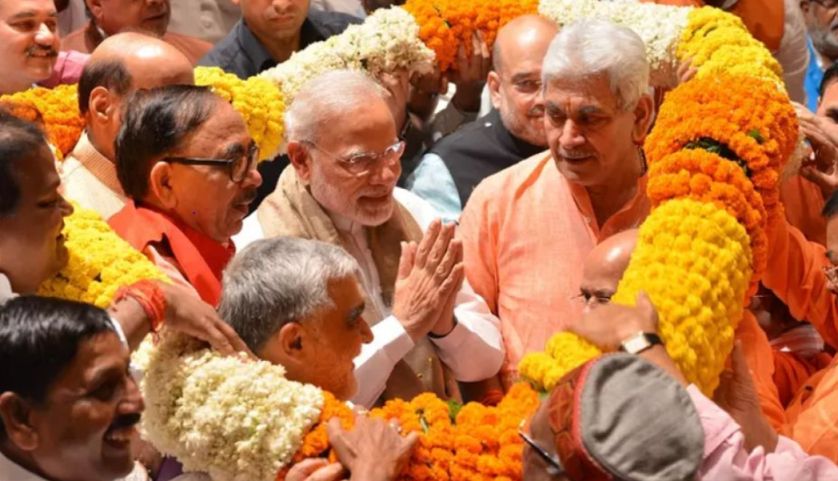
Victims Of Their Success
Modi’s BJP has been highly successful at winning
elections, given that Hindus constitute four-fifths of India’s 1.4 billion
people. Retaining power in democratic politics is about much more than
demographic arithmetic. This is particularly the case when almost a quarter of
a billion citizens are not from the majority faith – not to mention the
country’s regional and linguistic differences, especially in the south, where
the BJP’s brand of Hinduism faces resistance. This explains the Modi
administration’s difficult balancing act, amplified by growing domestic unrest,
international concerns, and criticism over the decline of the country’s
long-held secular democratic political tradition.
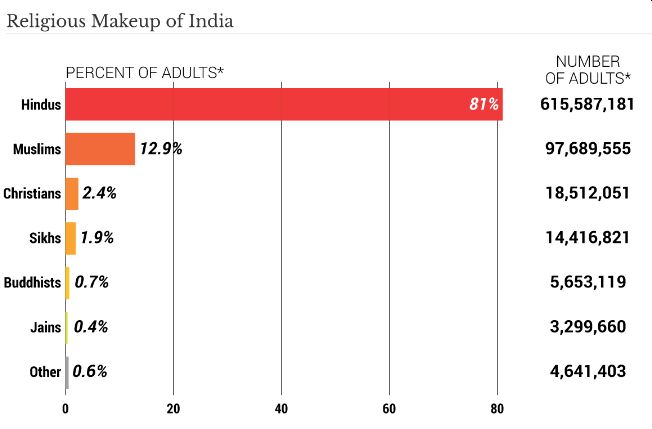
India’s prime
minister’s annual Independence Day speech reflected
how far political discourse has fallen in New Delhi. PM Modi hereby sported
a Tricolour-themed turban for Independence Day,
imbibing the ‘Har Ghar Tiranga’
spirit. If we look back, one notices that, unlike prior revolutions, India’s
split from the British Empire came about through a political movement committed
to nonviolence. The Indian National Congress, led by Mahatma Gandhi,
organized peaceful demonstrations on an unprecedented scale. The mighty
British Empire ultimately capitulated, encouraging anticolonial movements
worldwide.
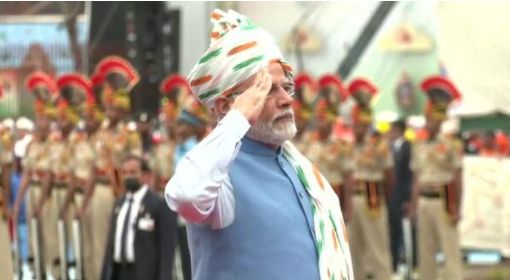
The Modi government defused a recent June crisis
involving the BJP’s then-spokeswoman, Nupur Sharma, who made controversial
remarks about the Prophet Muhammad. Sharma’s statements offended many of the
country’s 200 million Muslim minorities and triggered public condemnation from
several Muslim states, including close allies of India. Modi’s BJP was forced
to do damage control, removing Sharma from her position, to prevent the crisis from
undermining its political interests and India’s international standing. In
addition, India's supreme court issued a firm reprimand, saying that Sharma’s
“loose tongue has set the entire country on fire.”
The government’s
efforts somewhat pacified Indian Muslims and Muslim-majority countries, most of
which are close trading partners of India. However, it has triggered a debate
within the BJP’s broader ecosystem known as the “Sangh Parivar,” a
constellation of right-wing Hindu nationalist social and political entities
spawned by the Rashtriya Swayamsevak Sangh, the
parent organization of the BJP. A widespread perception within this community
is that Sharma was unfairly treated for remarks taken out of context and issued
in response to many Muslims’ ongoing mockeries of Hindu deities.
Though the situation was defused, it sheds light on
how the BJP’s ideology can be a liability for the ruling party. The elite of
almost all populist parties of any ideological persuasion is far more pragmatic
than its political base. What leaders say they will do before getting elected
differs from how they behave once in office, where they encounter the
constraints of policymaking and thus need to bridge the gap between campaign
promises and actual policy deliverables. This logic tends to create internal
differences within the ruling political movement where the existing leadership
faces a challenge from far more hawkish elements inhabiting the next echelons.

The BJP is no exception to this rule. The Sharma
incident occurred amid existing tensions between the ideologues within the BJP,
its broader environs, and the party’s top leadership, encumbered by the
imperatives of governing. The BJP’s electoral strategy pushed it toward the
weaponization of Hindutva; the ideology heavily focused on reviving Hindu
civilization by rolling back its Muslim heritage. This strategy created a
conundrum for the BJP because it unleashed majoritarian religious extremism,
which evolved well beyond the BJP’s electoral needs and thus beyond the party’s
control. A prime example of this intra-BJP schism is the state's chief minister
of Uttar Pradesh, Yogi
Adityanath, a hardliner Hindu monk-turned-politician well known for
whipping up anti-Muslim hysteria.
Yogi Adityanath has become the first CM from BJP to
retain power in Uttar Pradesh:
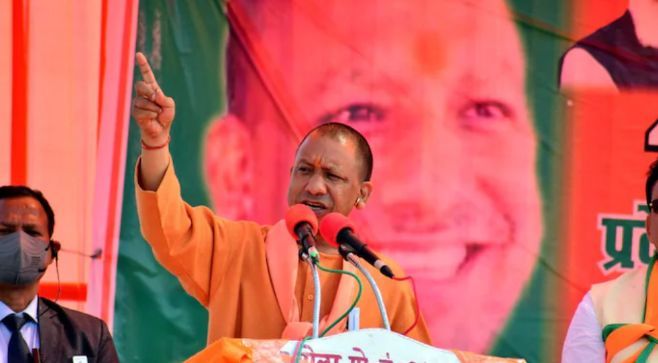
Ideologues like Adityanath, who have been loud voices
for establishing Hindu Rashtra (Hindu State), have been responsible for
mobilizing hundreds of thousands of young militants. To this extremist lot, the
actions of the BJP leadership against Sharma represent, at best, a weak
commitment to their cause and, worse, a betrayal. The move also reinforced the
perception that the project of Hindu Rashtra remains vulnerable to pressures
from Muslim and Islamist actors and that the Indian Muslim minority constitutes
a fifth column within the Indian body politic.
Uttar Pradesh Chief Minister Yogi Adityanath performs
'Kanya Pujan':
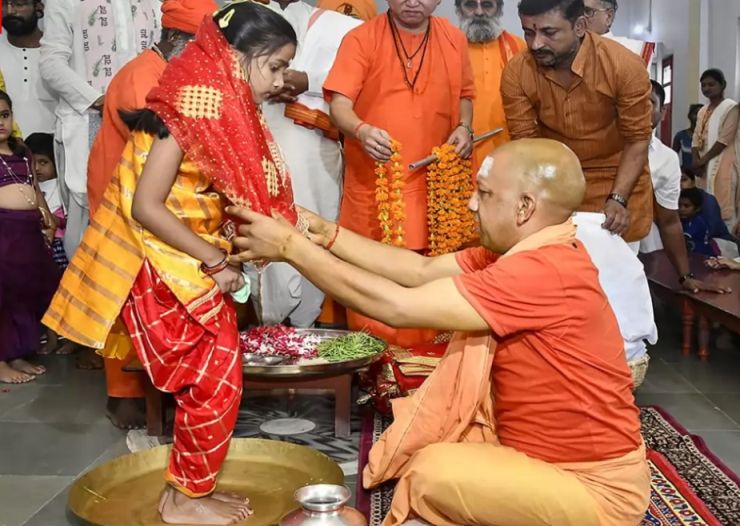
Successor Or Challenger?
The schisms within
the BJP were hardwired into the party’s fabric. Adityanath, for example, is not
originally from the party. Instead, he emerged from a more hawkish strain of
Hindutva in his native Uttar Pradesh through his political vehicle, the Hindu Yuva Vahini, and the highly influential Hindu temple he
leads, known as the Gorakhnath Math. As recently as
the late 2000s, he clashed with the BJP when he fielded candidates against the
ruling party and was instrumental in the defeat of an incumbent finance
minister in the then-BJP government. Seeing his mounting influence in Uttar
Pradesh, the BJP accepted Adityanath as the party leader in the state.
After nearly a decade
as a lawmaker in the Indian parliament, Adityanath returned to state politics
in Uttar Pradesh in 2017 when he became chief minister of the state – a
position he consolidated with his reelection in March 2022. Even before his
second-term victory (the first sitting chief executive of the state to win
reelection since independence), Adityanath emerged as the second most popular
leader in the BJP after its chief, Modi, who has been telegraphing – even if
for political purposes – that the monk is his protege. At 50, Adityanath is
younger than the 72-year-old Indian prime minister. Thus, he has enough time to
position himself as Modi’s successor even though he intends to seek a third
term in the 2024 elections.
Regardless of the future positions of the two men,
Adityanath’s rise has the BJP establishment concerned about the ruling party’s
continued ability to balance between its need to leverage religion to maintain
its unique position in the Indian political landscape and to govern what will
soon be the world’s largest nation. Thus far, the party has been able to do so
by complementing its Hindu First ideology with a powerful political machine
with deep grassroots support and a welfare economic model. But ultimately, the
BJP brand relies heavily on exclusionary politics, which engenders religious
extremism capable of upsetting India’s fragile social stability.
The BJP faces no
effective national-level opponent. Its main rival, the
Congress Party, which ruled the country for 54 of its 75-year history, is a
shell of its former self, given that the BJP’s Hindutva has supplanted its
secular nationalist ideology. However, Hindutva appears to be growing beyond
the ruling party’s ability to harness it for electoral purposes. This long-term
trend will have a direct bearing on India and the stability of the world’s most
densely populated region of South Asia – an area already impacted by Muslim
extremism on its western flank.
For updates click hompage here